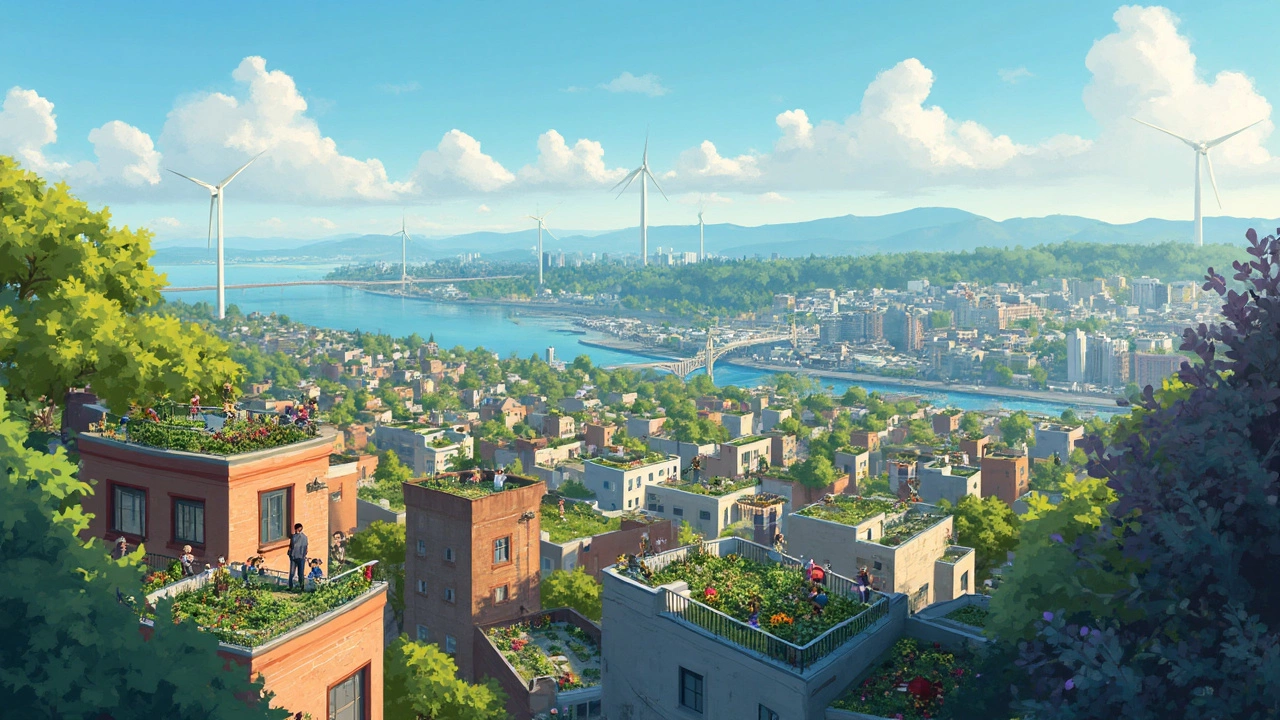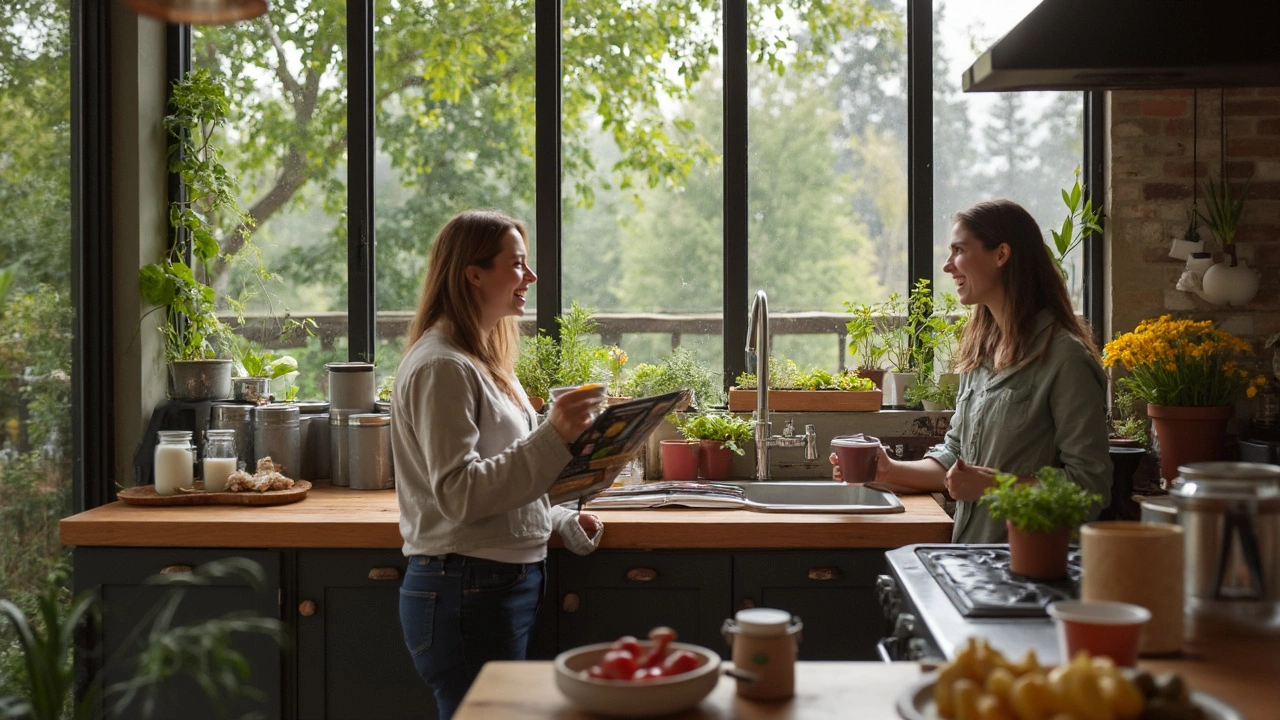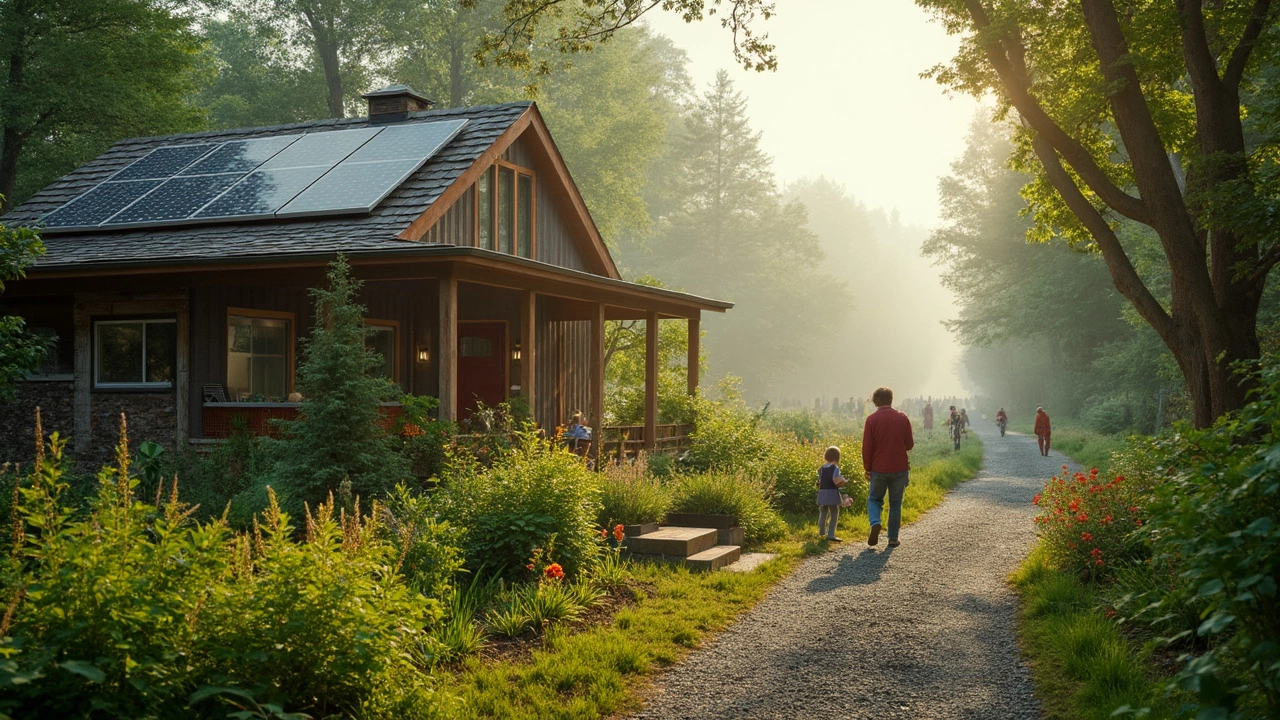If you’re searching for the most eco-friendly city in America, Portland, Oregon pretty much wears the crown—and it’s not just hype. You’ll find compost bins next to trash cans in nearly every neighborhood, and seeing folks ride bikes in the rain is just business as usual. What really makes Portland stand out? It mixes smart urban planning with a real, boots-on-the-ground commitment to going green.
Even the way people build and live in homes here feels different. Eco cottages—those cozy, energy-efficient spaces—have really taken off. In Portland, they're not just a trend; they’re a part of how the city keeps things small, manageable, and friendly to the planet. Curious about how Portland's green magic works or whether you could live this way yourself? Let’s dig in and see what makes this city a model for anyone dreaming of eco-friendly living—whether you’re building from scratch or just want to do better for the earth.
- Why Portland Ranks at the Top
- How the City Reduces Its Carbon Footprint
- Eco Cottages: Small Spaces, Big Impact
- Everyday Green Living in Portland
- Tips for Staying or Building Sustainably
Why Portland Ranks at the Top
This city didn’t just stumble into its eco-friendly reputation. Portland’s whole vibe is built around sustainable choices, and it shows everywhere—from how the city is laid out to how people get around. Public transportation here is a big deal. TriMet buses, MAX light rail, and streetcars make it pretty easy to ditch the car, which helps keep the air fresh. More than 7% of folks in Portland bike to work, which is way above the national average. That’s no accident—it’s thanks to over 350 miles of bikeways woven through the city.
Green spaces are another huge point of pride. About 16% of Portland is covered by parks and open spaces, according to the city’s environmental services. Forest Park, for example, covers more than 5,000 acres and stretches for miles right inside the city, making it one of the country's biggest urban forests. Here, nature isn’t something on the fringes. It’s in your backyard—perfect for anyone considering an eco-friendly city for their next move.
Recycle and compost bins are pretty much everywhere, and many restaurants or cafes stick to the city’s food scrap program. Portland was one of the first American cities to ban single-use plastic bags back in 2011. And there’s a big push toward renewable energy—Portland has set a goal for 100% clean electricity by 2030. The city already gets about 45% of its power from renewables, like wind and hydropower.
Here’s a quick snapshot of what sets Portland apart:
- Over 350 miles of bike paths citywide
- 16% of land devoted to green spaces
- Food scrap composting required for most households
- Recycling bins nearly everywhere you look
- Ambitious clean energy goals and a strong start with renewables
All these efforts add up. Portland isn’t just an eco-friendly city on paper—it’s a place where you can actually live green every day, especially if you’re eyeing a cozy eco cottage or just curious how these changes really play out.
How the City Reduces Its Carbon Footprint
When it comes to actually cutting down on carbon, Portland is basically on a mission. The city set a goal way back in 1993 to lower its greenhouse gas emissions, way before it was trendy. Today, Portland has managed to cut its carbon emissions per person by more than 20% compared to 1990 levels—even while the population’s gone up. That’s not something you see every day in a growing city.
Public transit here isn’t just for tourists. The MAX light rail, buses, and streetcars are the real-life backbone for a lot of locals. Some people ditch their cars for good. And cyclists? Portland’s bike culture is next level: over 400 miles of dedicated bike lanes snake through the city, making it easier (and often faster) to pedal than to drive.
Energy-wise, the city pushes renewables hard. You’ll spot solar panels on everything from schools to eco-friendly cottages. Almost all city buildings now run on green power. And the local utility gives residents a choice—pick a plan with 100% renewable energy and you’re good to go. Check out this snapshot of everyday energy choices:
| Green Energy Plan | # of Households (2024) |
|---|---|
| 100% Renewable | 62,000+ |
| Partial Renewable | 89,000+ |
Recycling and composting aren’t just encouraged—they’re pretty much expected. Portland runs curbside compost pick-up for every home, which means food scraps and yard waste stay out of landfills. By 2024, the recycling rate in the city was around 70%. That’s nearly double the U.S. average.
The city also limits urban sprawl on purpose. They keep a tight "urban growth boundary," so more green spaces survive and people can live closer to work, parks, and markets. Less sprawl means fewer emissions from long car commutes—and more chances to walk or bike, too.
Bottom line: Portland’s mix of policy, public action, and daily habits makes it really tough to beat when it comes to living and building in an eco-friendly way.

Eco Cottages: Small Spaces, Big Impact
In Portland, the rise of eco cottages isn’t just about living with less. It’s about smart design and shrinking your footprint without giving up comfort. These homes often clock in at under 800 square feet, which pushes people to focus on what actually matters—and makes it way easier to keep everything energy-efficient.
Building codes in Portland specifically encourage Accessory Dwelling Units (ADUs). That’s just the city’s take on eco cottages. The zoning rules let you add one in your backyard or replace an old garage with a climate-friendly mini-home. In 2022, Portland actually waived some permit fees for ADUs to give folks a bigger incentive to build green.
Here’s what sets Portland’s eco cottages apart:
- Insulation and airtightness: Most cottages here use advanced insulation, triple-paned windows, and super-tight seals. You end up spending less on heating and cooling, and your place feels comfy year-round.
- Renewable energy: Solar panels are a common sight on cottage roofs. Portland gets more sun than you’d think, and solar tech keeps getting cheaper every year.
- Eco materials: Folks use locally sourced wood, recycled glass, and repurposed building materials. Less waste, smaller supply chain, smaller carbon footprint.
- Rainwater catchment and green roofs: Collecting rain and growing sedum or moss on the roof isn’t rare around here. It keeps stormwater out of the sewers and helps the city handle heavy rain.
There’s actual proof these eco-friendly setups make a difference. Here’s a quick look at how an eco cottage stacks up compared to a typical U.S. home:
| Eco Cottage (Portland) | Average U.S. Home | |
|---|---|---|
| Average Size | ~650 sq ft | ~2,300 sq ft |
| Annual Energy Use | Less than 6,000 kWh | ~11,000 kWh |
| CO2 Emissions | Lower (up to 50% less) | Standard baseline |
Living small doesn’t mean you’re boxed in. Open floor plans, huge windows, and clever storage create a space that feels bigger than you’d guess. Most people in Portland who choose these homes say the lifestyle feels less stressful and way easier to keep tidy. Thinking about building your own eco cottage or just downsizing? Portland’s got the rulebook, supportive community, and a bunch of local experts ready to help.
Everyday Green Living in Portland
Daily life in Portland shows how serious the city is about green living. If you stroll through any neighborhood, you’ll spot folks rolling out bikes and cargo e-bikes for groceries instead of getting behind the wheel. The city’s bike lanes aren’t just token strips of paint—they actually connect people to parks, schools, and even grocery stores. Up to 7% of Portland’s commuters get to work by bike or foot, one of the best rates in America for a major city.
Being eco-friendly isn’t just about transportation. Portland’s curbside compost service means nearly every resident can toss food scraps into their green bin to get turned into rich soil. The city banned plastic bags years ago, so reusable totes are the norm at every supermarket. Even little kids know to bring their water bottles and lunch boxes.
The housing scene is another big part of everyday eco-friendly city life. With tight rules on energy use in homes, many people opt for efficient appliances and smart heating systems. Some blocks even have community solar panels. Need proof? In certain neighborhoods, over 80% of residents recycle or compost. Here’s a quick look at some daily sustainable habits you’ll notice in Portland:
- Bikes, buses, and light rail for commuting—many families live car-free.
- Rainwater collection barrels on front porches to water backyard gardens.
- Zero-waste groceries in bulk, with refills for soap, shampoo, and even dog treats.
- Local farmer’s markets pop up almost every day, connecting residents to regional produce.
- Home energy audits for every new buyer—many homes even publish their green stats online.
Here’s a little data snapshot from Metro Portland’s Green Living Survey last year. It shows just how normal these habits are:
| Green Habit | % of Households |
|---|---|
| Composting | 88% |
| Bike or public transit for commute | 23% |
| Rainwater collection | 31% |
| Bulk or zero-waste shopping | 44% |
Eco cottages are right in the mix too. Landlords often offer compost buckets, and renters swap gardening tips in neighborhood groups. If you’re looking to blend right in, it’s all about starting with small, daily choices that actually stick.

Tips for Staying or Building Sustainably
Want to make your mark in eco-friendly city living, or just bring a bit of Portland’s green spirit into your own life? You don’t have to build from the ground up—small shifts can add up big time. Here’s what’s working right now, and how you can copy those moves.
- Choose Local Materials: In Portland, builders often go for locally sourced wood and stone to cut down on emissions from shipping. Using recycled materials isn’t just for bragging rights; it really does save resources.
- Go Small and Smart: If you’re building an eco cottage, every square foot counts. Smaller spaces use less energy. Try open layouts, triple-glazed windows, and proper insulation—these aren’t add-ons, they’re pretty much standard here for energy savings.
- Use Renewable Energy: Rooftop solar panels are popping up all over town. Oregon even offers state tax credits to help offset the setup cost. If panels aren’t an option, opt into your local community solar program or choose a renewable source from your utility provider.
- Rainwater Harvesting: Portland lets homeowners collect rainwater for gardens. It’s a practical way to cut down on water waste, especially during dry summers.
- Smart Heating and Cooling: Heat pumps are replacing traditional furnaces and AC units in a lot of green living projects here. They’re way more efficient, especially for smaller cottages.
- Composting and Recycling: Nearly all eco-friendly cottages in Portland use curbside compost and robust recycling systems. This keeps tons of waste out of landfills. Get a small kitchen bin to make it easy—you’ll be surprised how much food waste you keep out of the trash.
If you just want a taste of this life while visiting, pick short-stay rentals that are part of Portland's Green Certification Program. These homes track water and energy use, compost all food scraps, and often lend guests bikes or transit cards instead of parking passes.
| Feature | Standard Cottage | Eco-Friendly Cottage |
|---|---|---|
| Windows | Single/double-pane | Triple-pane, low-E glass |
| Heating | Gas/electric furnace | Heat pump / radiant floor |
| Water Use | Municipal only | Rainwater harvesting |
| Roof | Standard shingle | Green or solar roof |
One more thing: Portland’s home improvement stores and co-ops often hold free workshops on sustainability, from installing low-flow faucets to making your own non-toxic cleaning products. It might sound simple, but building or staying green really is about stacking these small wins.
